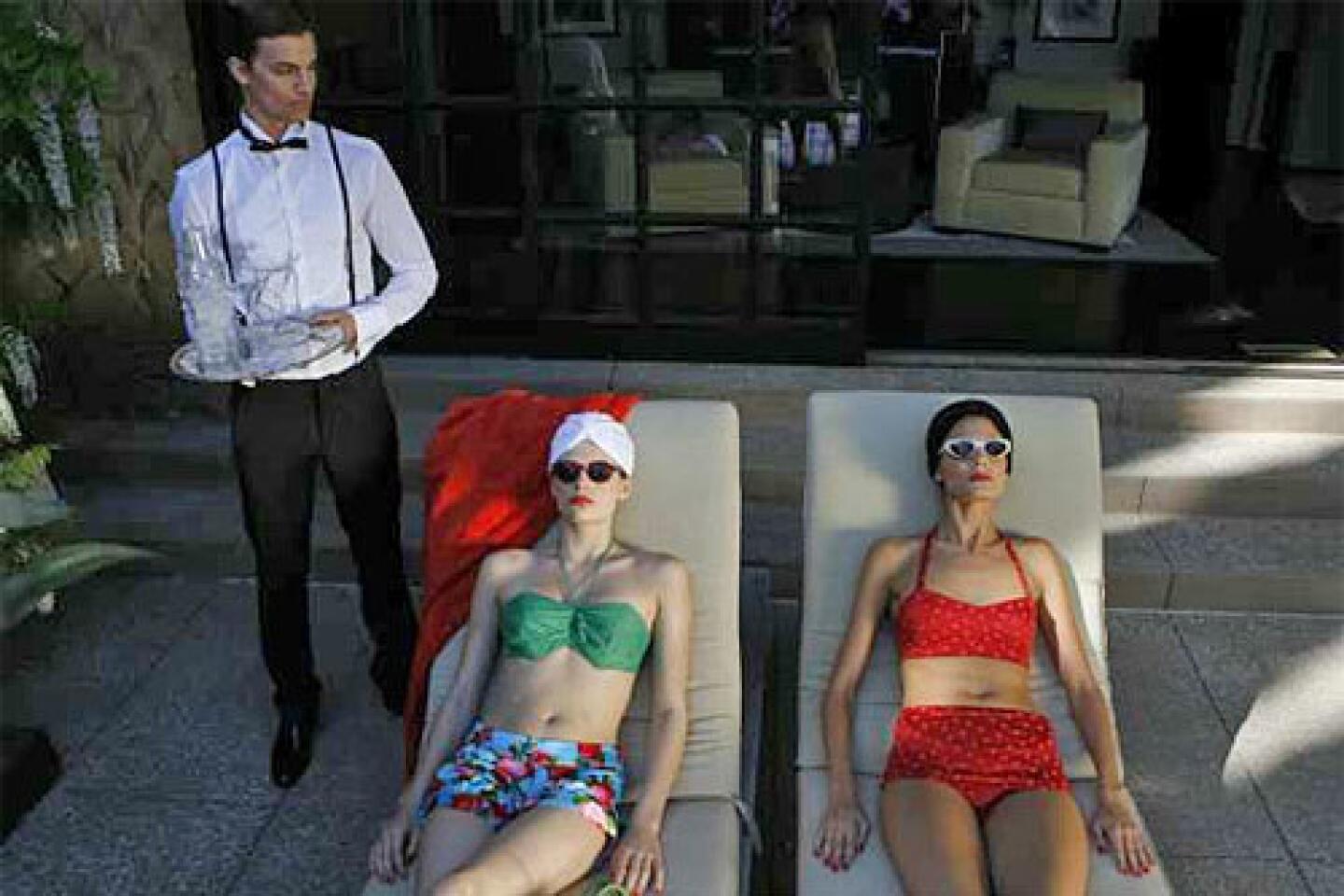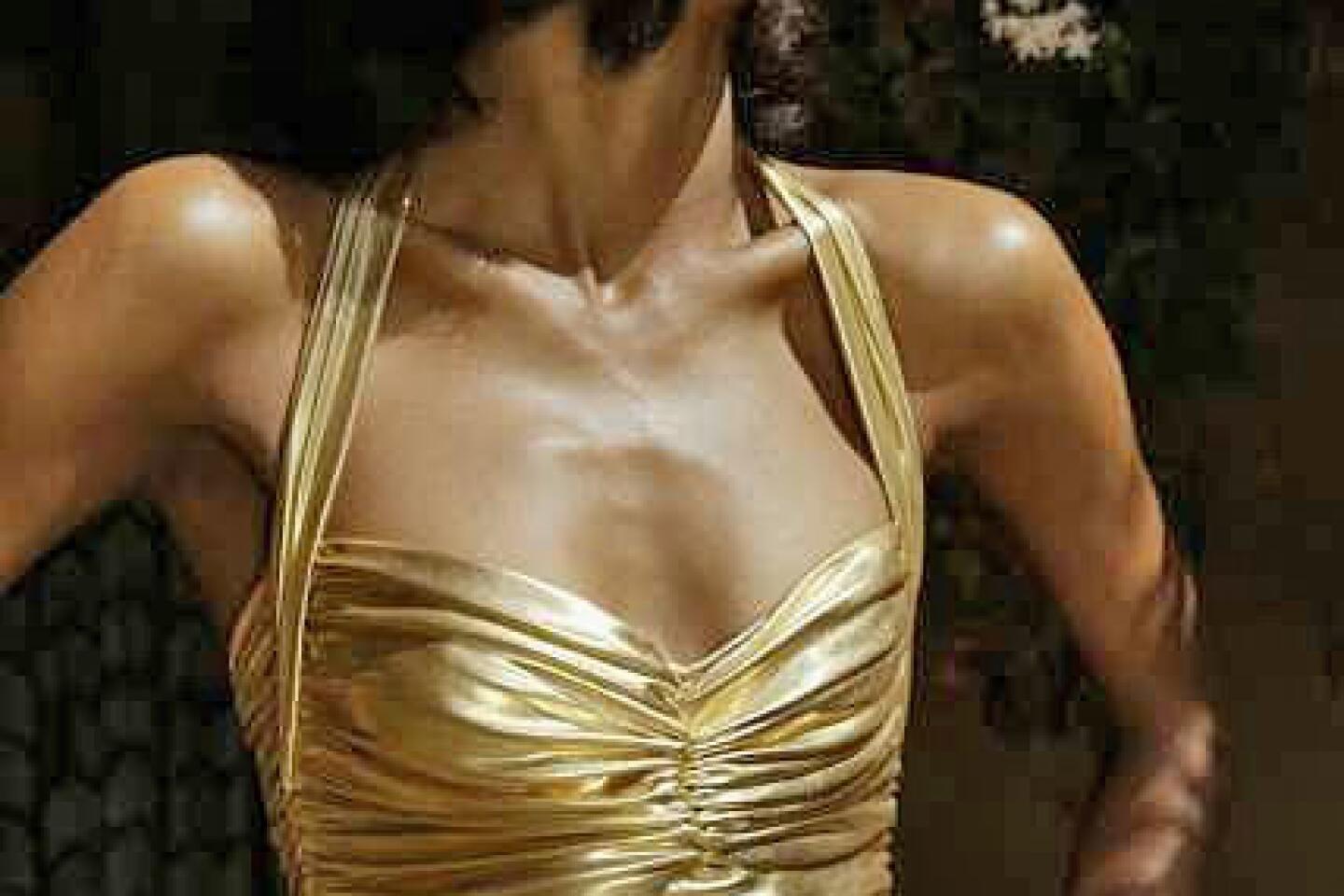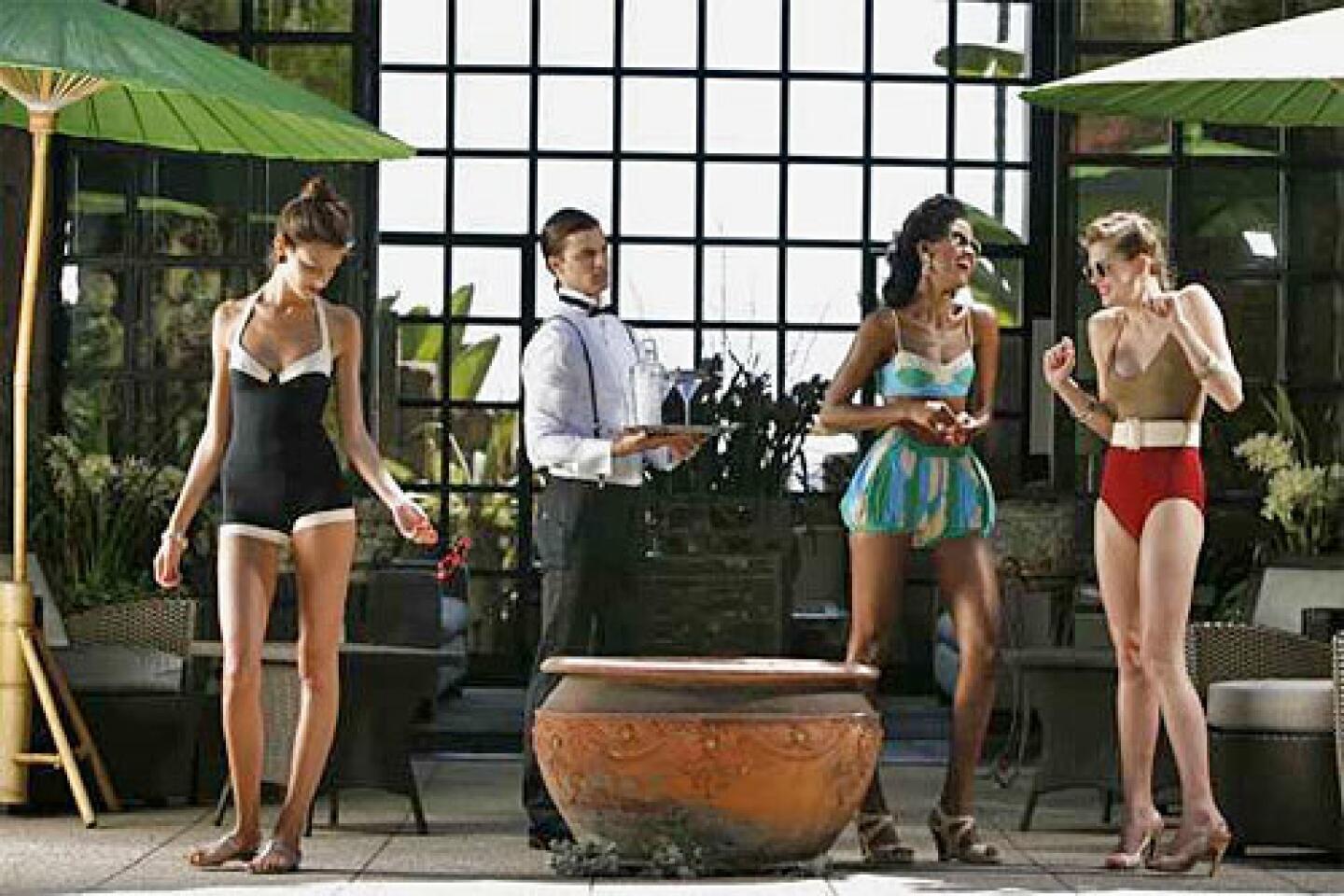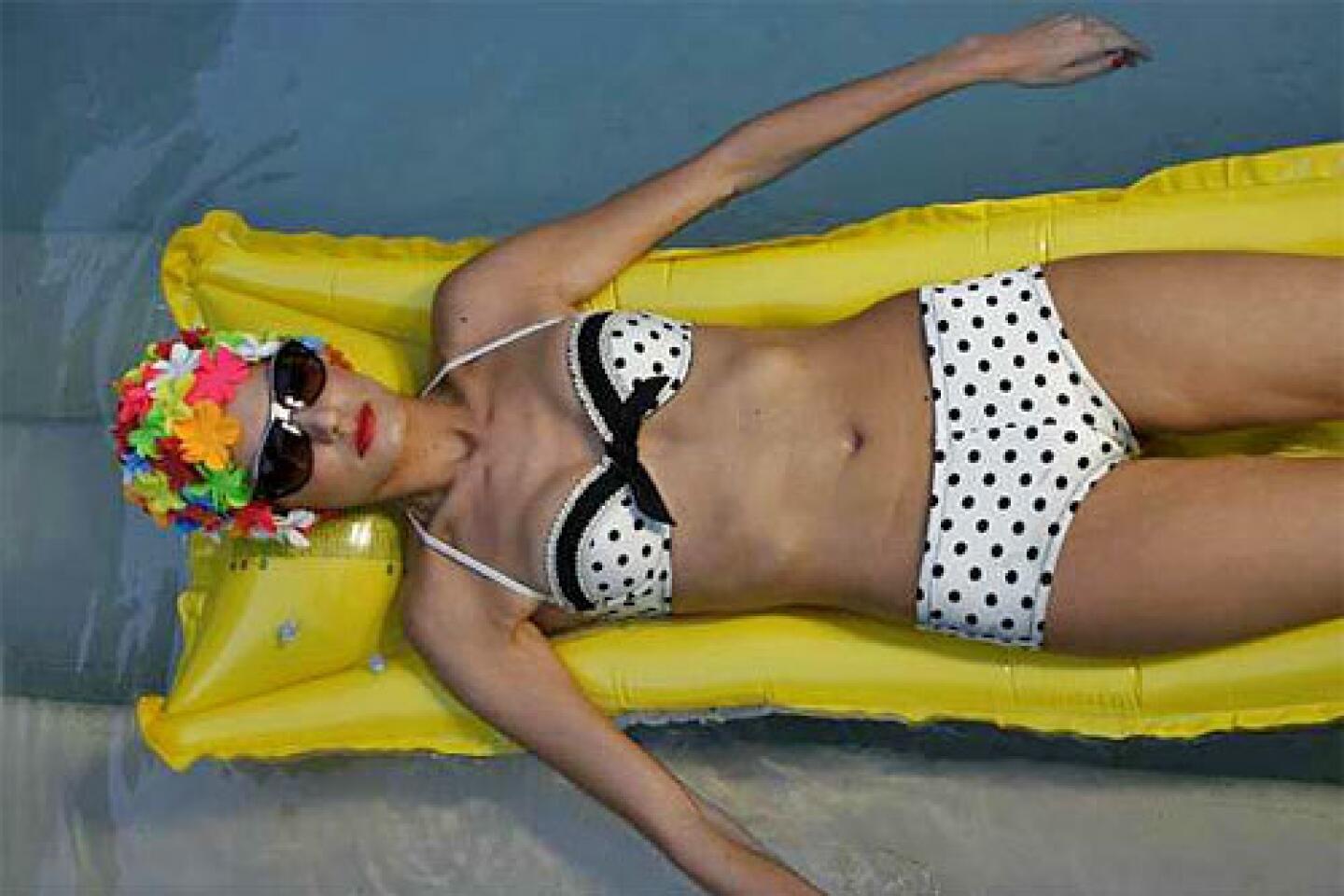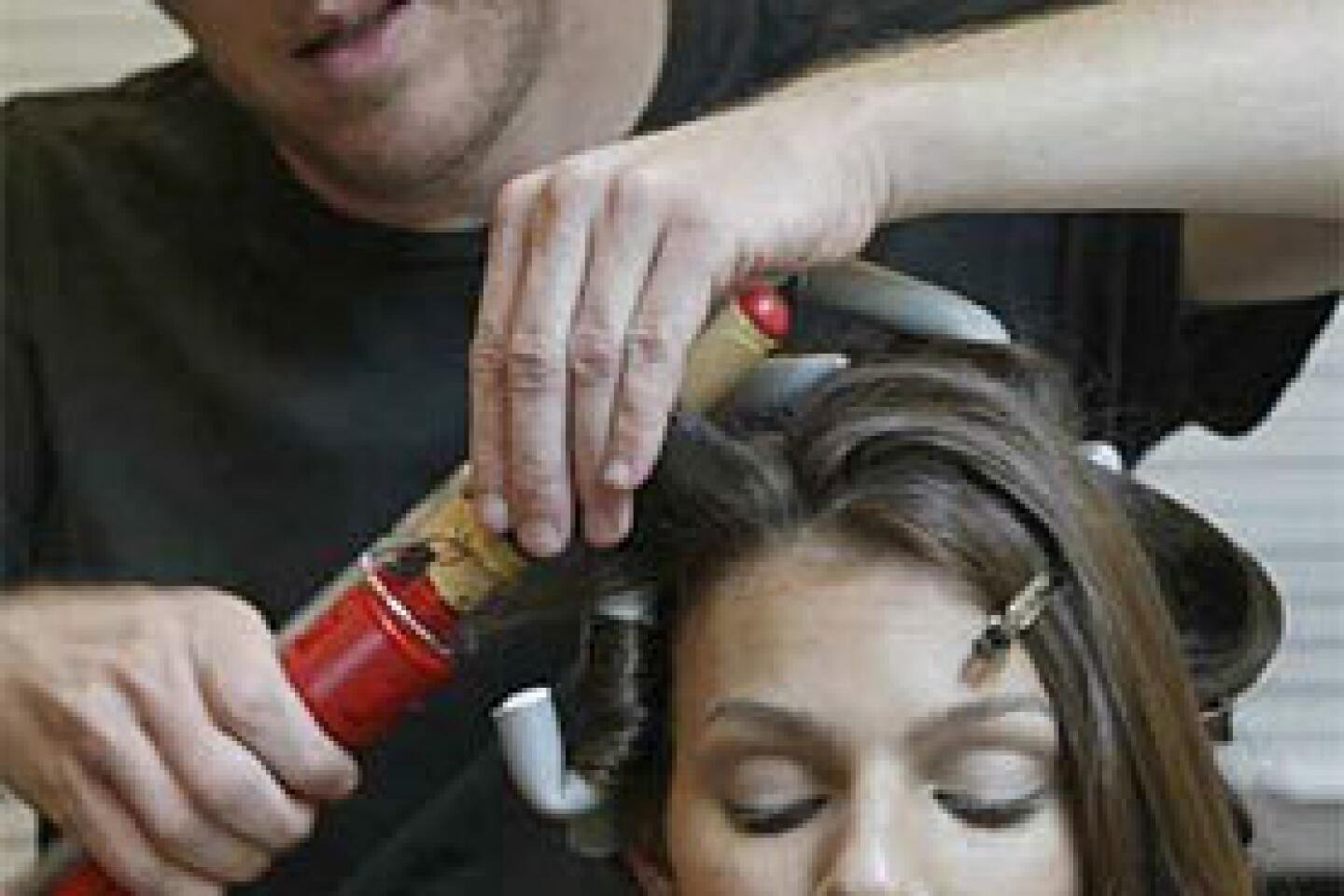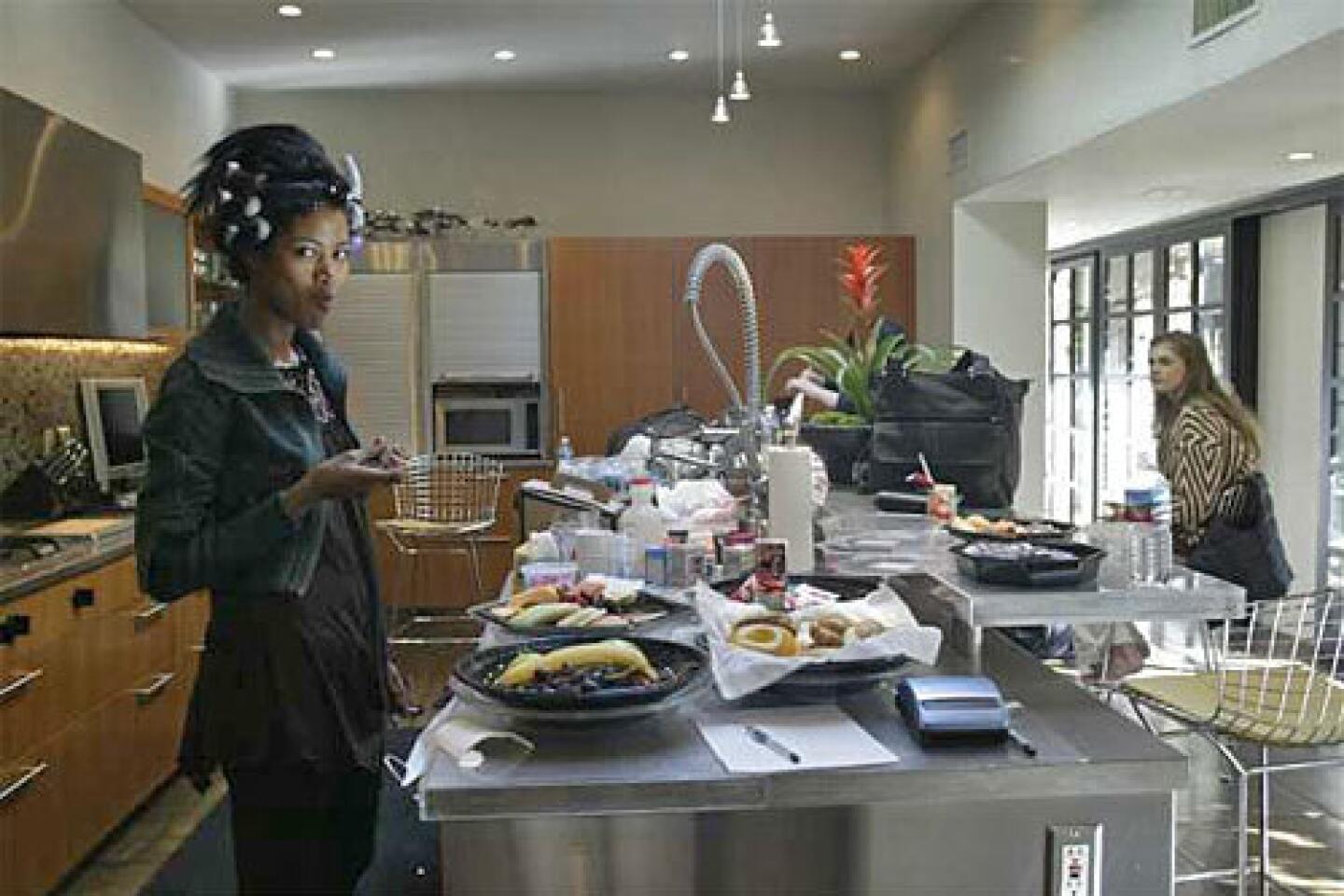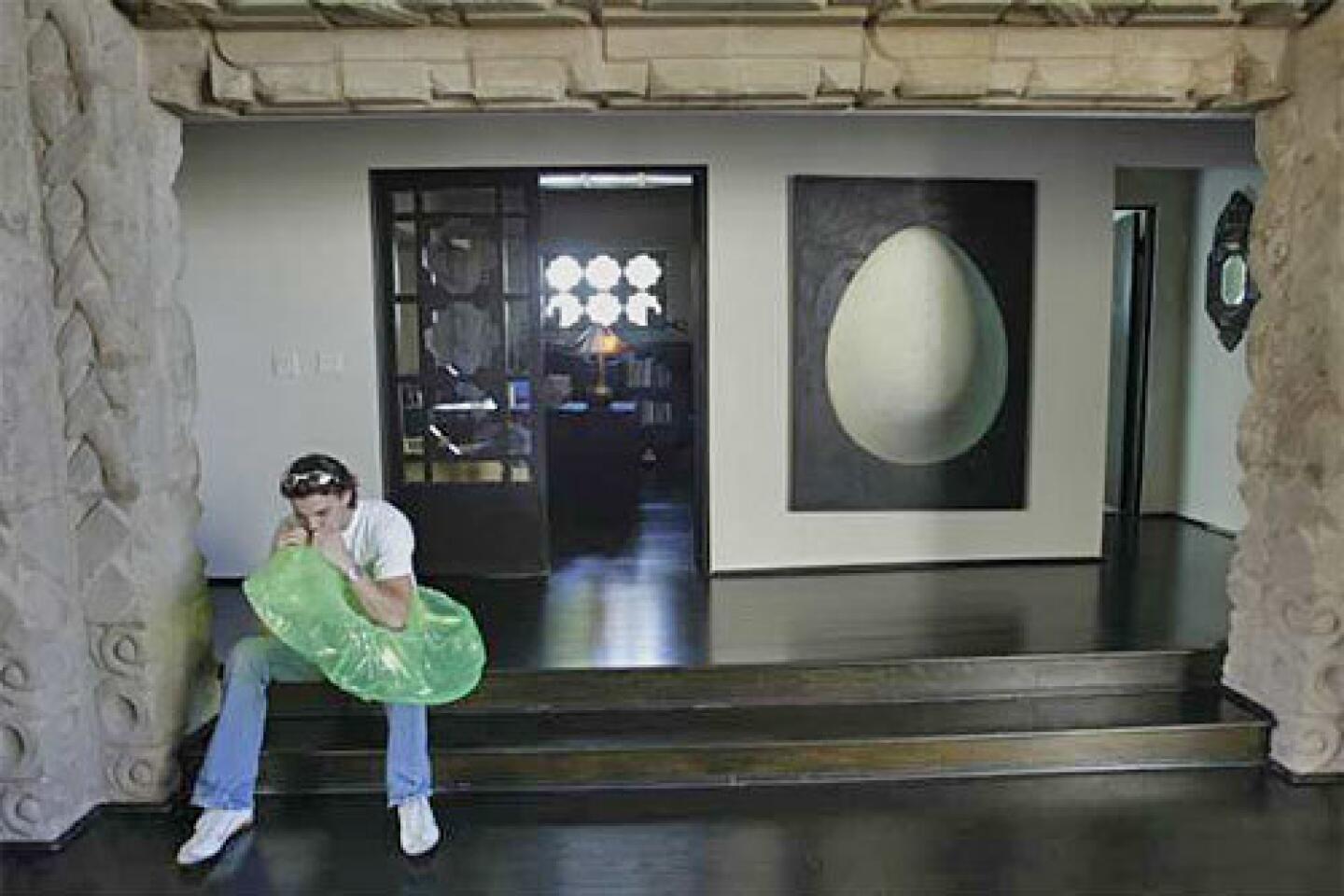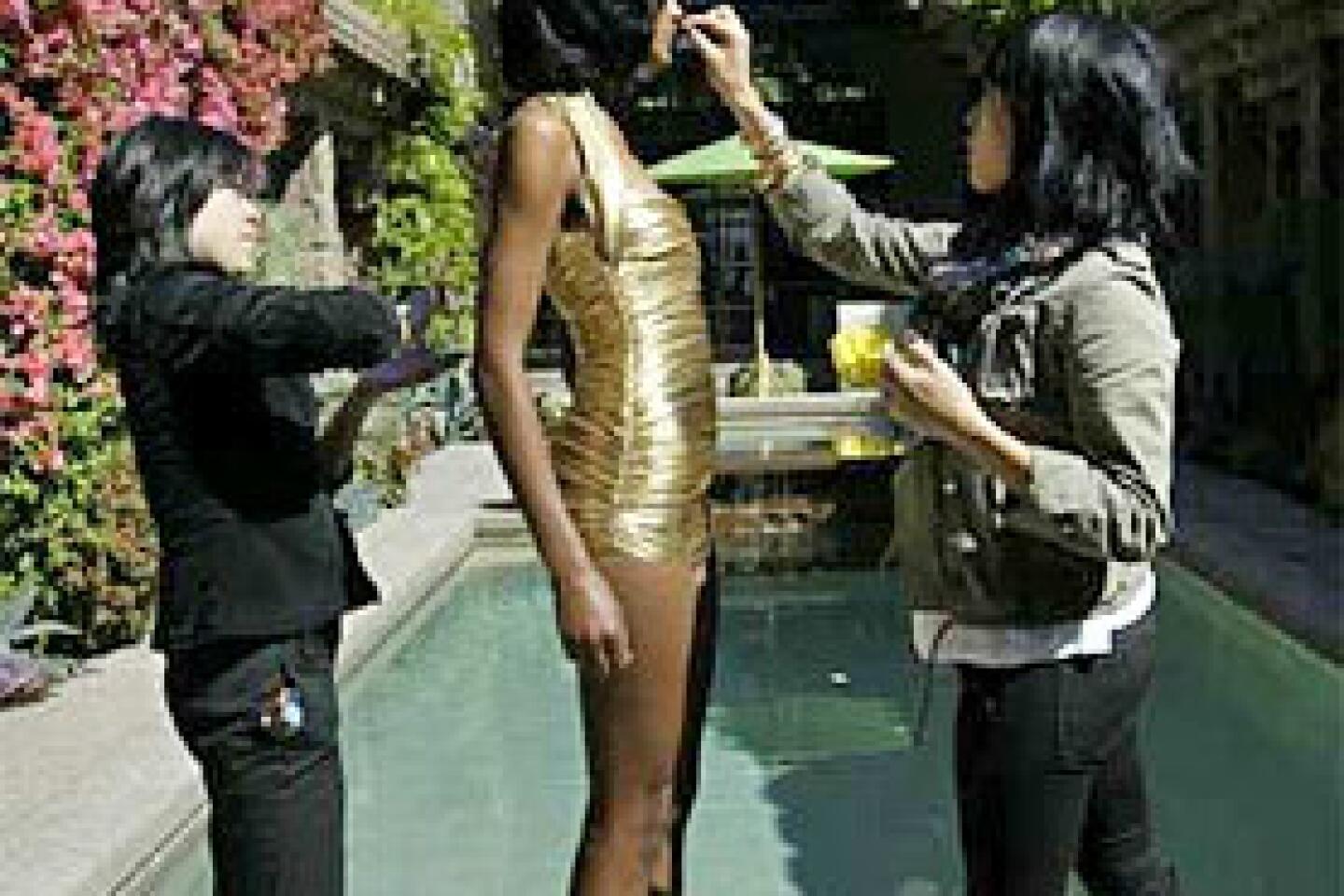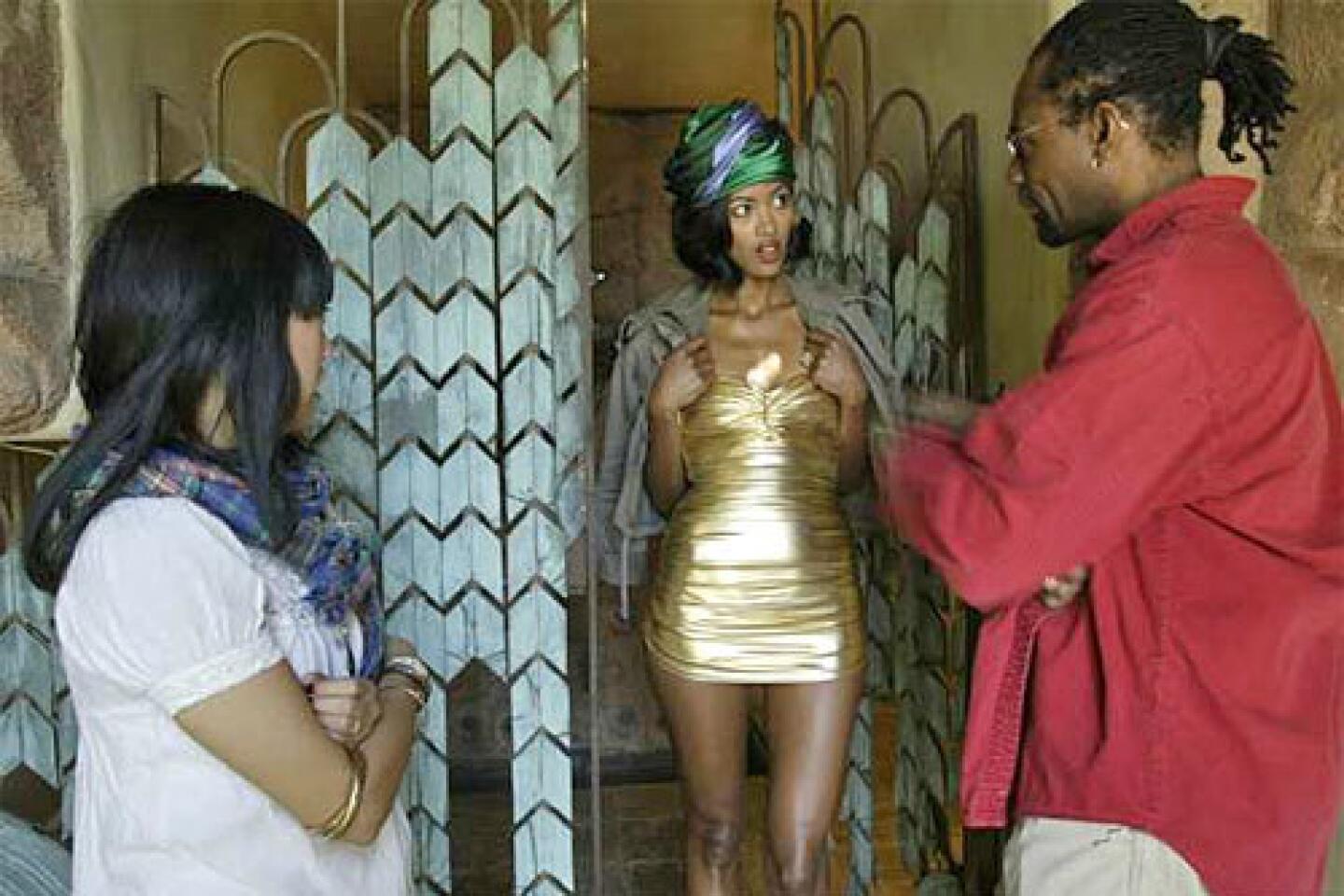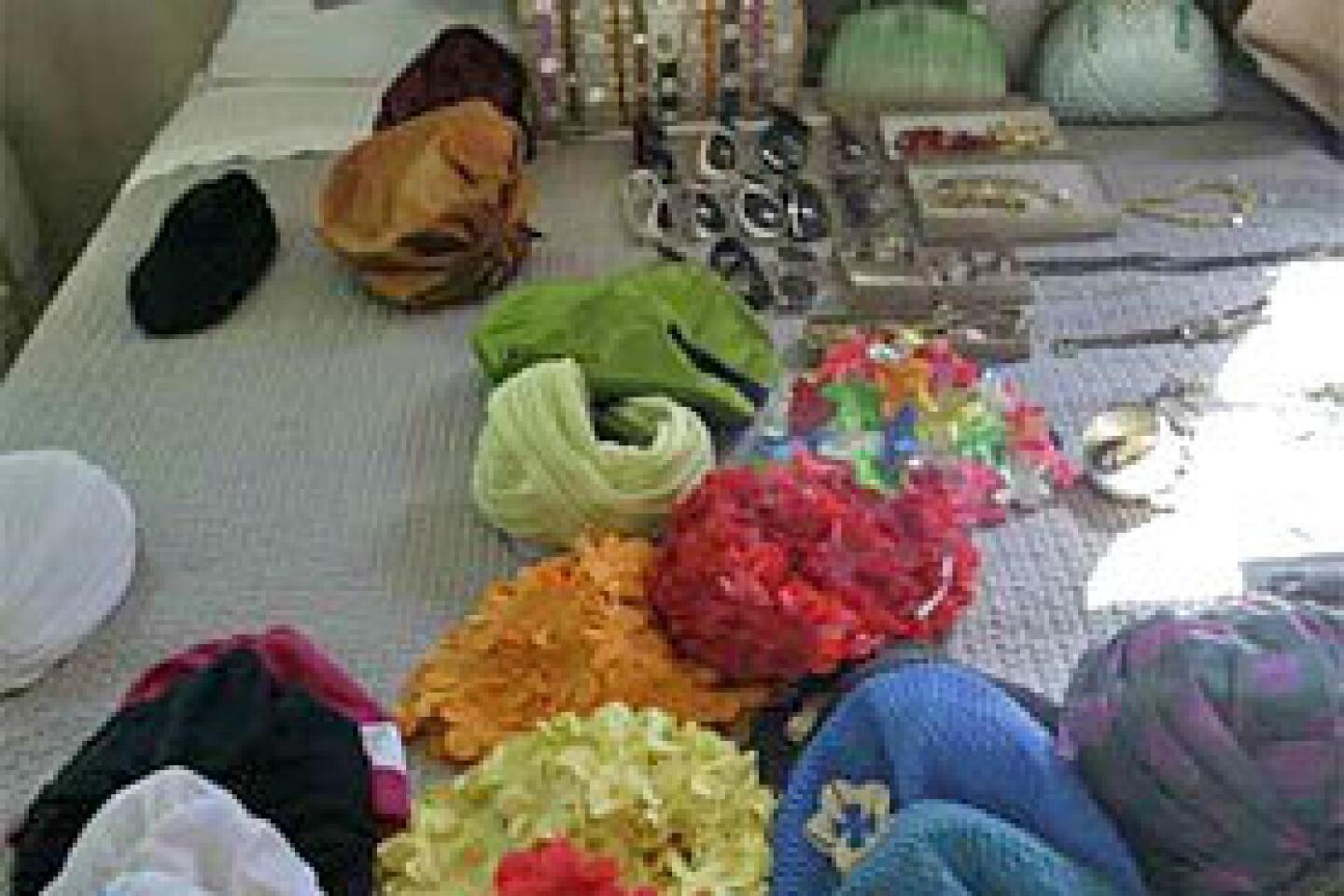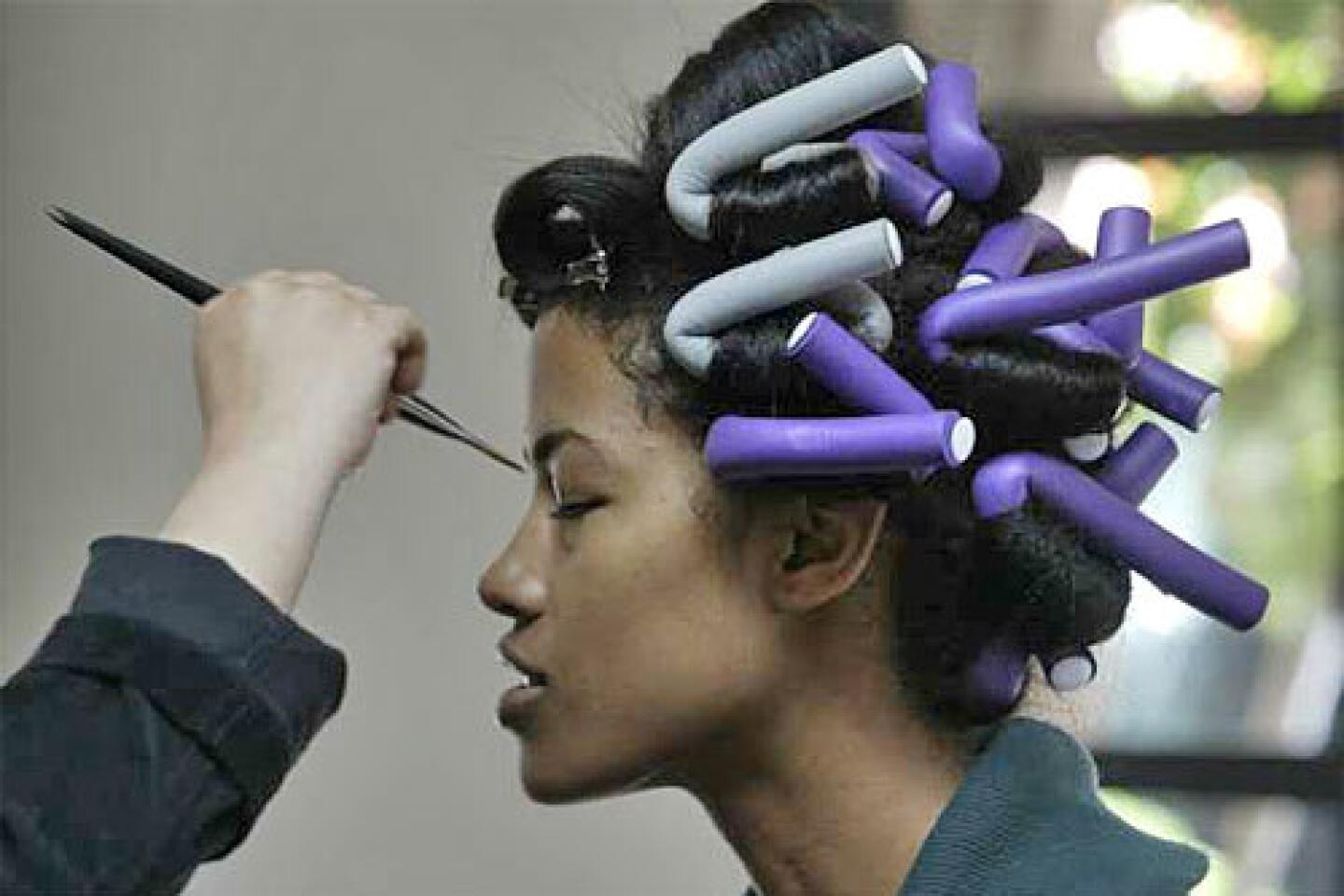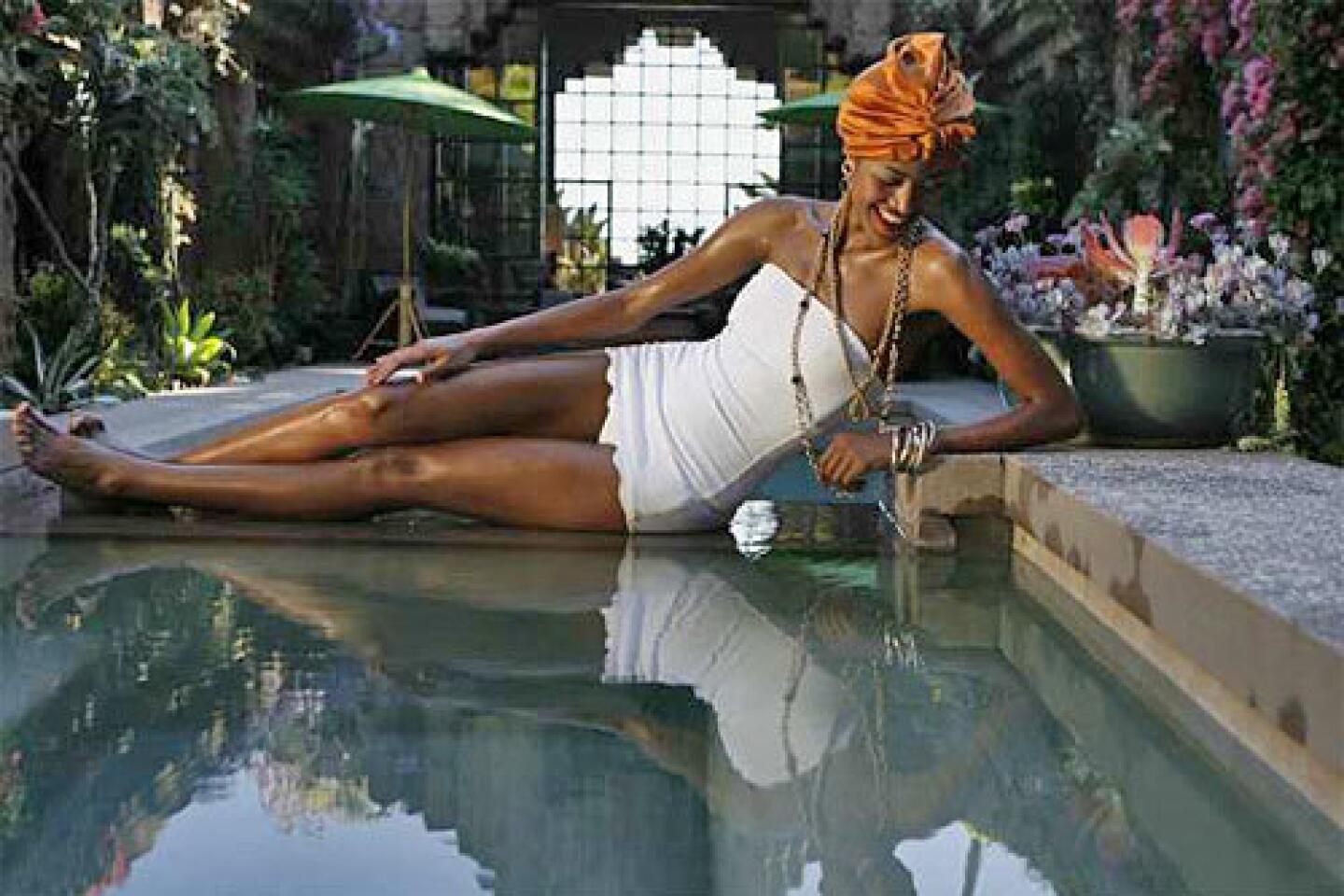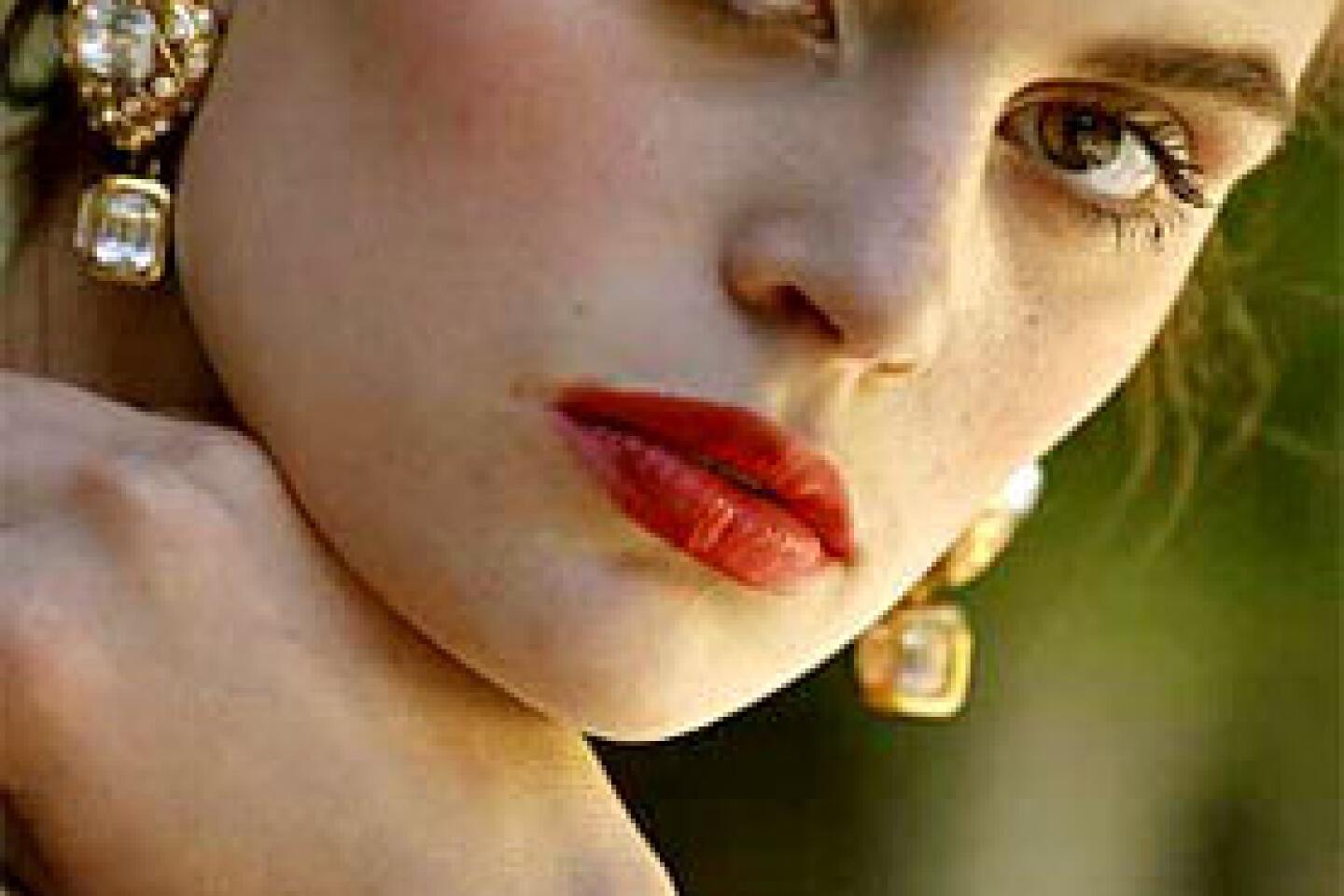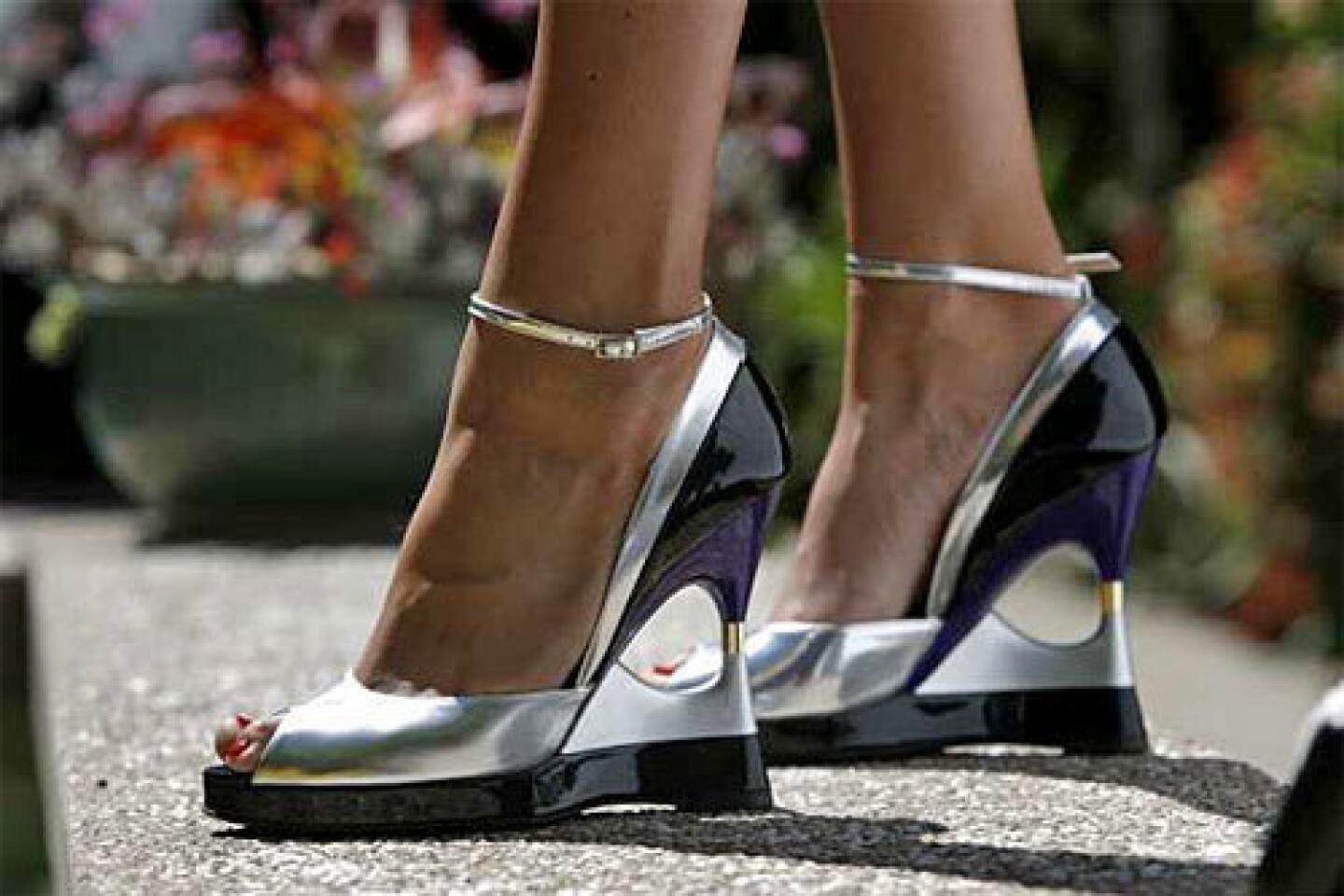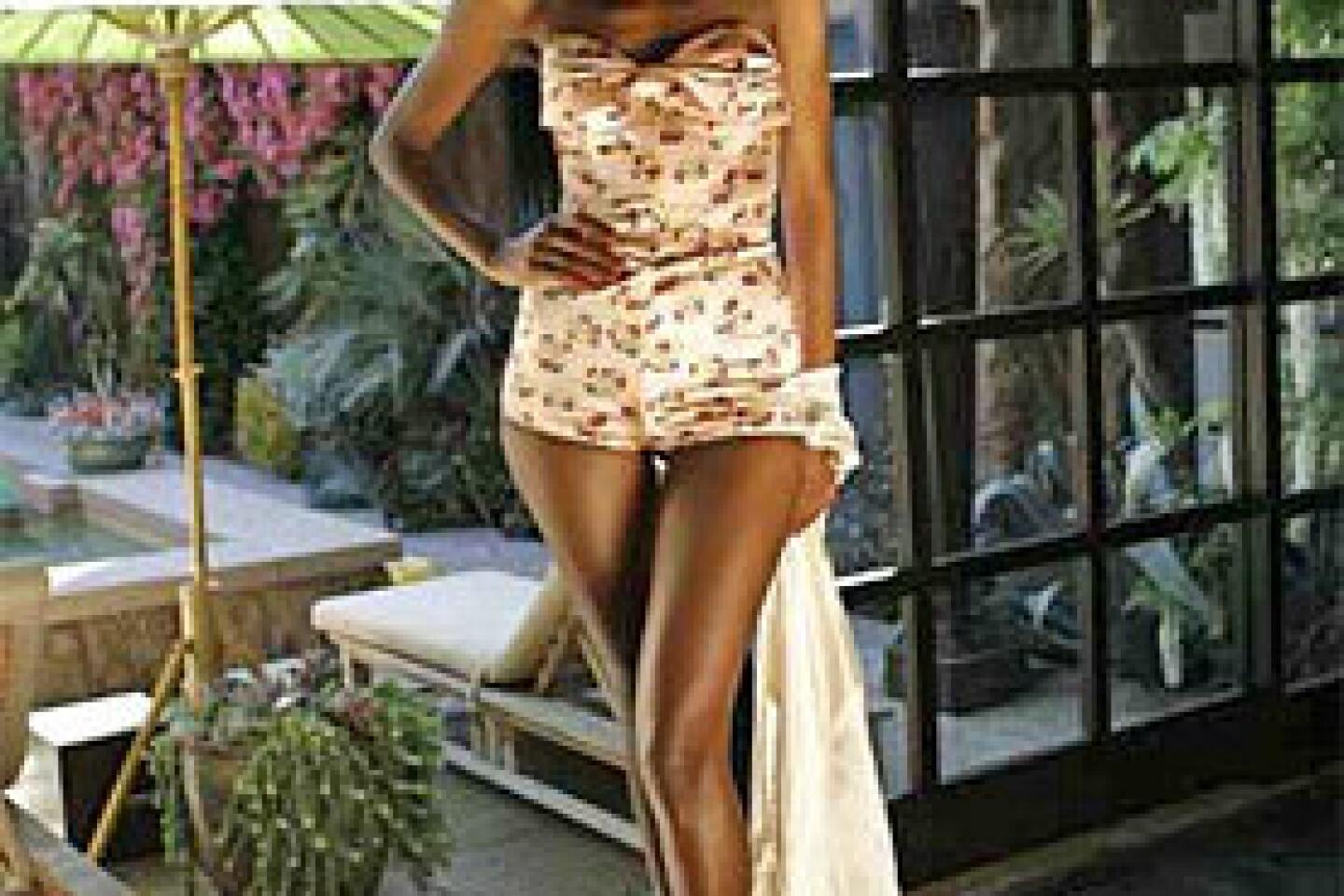IT’S A COVERUP
WOMEN of the world rejoice: This is not the season of the skimpy swimsuit.
Michael Kors put full-cut bikinis on the runway two years ago, and Abaeté designer Laura Poretzky has been making pinup-style suits since 2004. But the retro swimwear trend really took off with the spring collections, when Stella McCartney showed a playful blue-and-green two-piece with bloomers on the bottom, and Karl Lagerfeld channeled Brigitte Bardot with a boucle knit bandeau and briefs at Chanel. Miuccia Prada made the most convincing case for poolside modesty when she paired jewel-tone satin tunics and turbans straight out of “Sunset Boulevard.”
More than anyone else, Prada broke from the kind of fussy ornamentation that had been driving fashion. Above all, she exulted the female form, putting the spotlight on the most innocent of feminine assets, a great pair of gams.
And as unimaginable as it may have seemed, our bare-it-all pop culture is actually catching on to the coverup trend. Scarlett Johansson played the 1940s starlet in the April issue of Vogue, baring very little as she posed in Dolce & Gabbana and Prada at the pool and the beach. Another curvy girl, Beyoncé Knowles, posed for the cover of the latest Sports Illustrated Swimsuit issue in a yellow-and-orange bikini of her own design with an ample boy-cut brief.
This move toward covering up could be a reaction to too many crotch-shot-stealing years of Britney Spears and Paris Hilton. But it’s also about a renewed interest in getting dressed, even for the pool — wearing lipstick, leaving your jewelry on, ditching those $4.99 flip-flops for sky-high platform sandals, and protecting that fabulous coif with an even more fabulous bathing cap. It’s about returning the mystery to fashion by not letting it all hang out.
Wearing today’s retro-inspired styles with ruching around the middle, low-cut legs and sweetheart necklines requires the confidence to appear as if one might have something to hide — a flabby midriff, rounded thighs or breasts not augmented by implants. Add a turban and you’re really challenging the notion of what’s conventionally sexy, with headgear rarely seen on anyone younger than 70.
But rather than dressing like a fuddy-duddy, you can be assured that you are following in the wake of some serious fashion trailblazers, beginning with Aussie marathon swimmer Annette Kellerman.
From bathing to swimming
WHERE bathing suits are concerned, today’s safe was yesterday’s scandalous. Soon after Kellerman arrived on U.S. shores in 1907, she was arrested for trotting out a bare-legged bathing costume at Revere Beach near Boston. (At the time, women were still splashing around in cumbersome pantaloons and sailor dresses.) After she famously said in court, “I want to swim. And I can’t swim wearing more stuff than you hang on a clothes line,” the charges were dropped.It was Kellerman who turned the overburdened, puritanical exercise of bathing into the body-conscious act of swimming. By 1913, Jantzen was manufacturing one-pieces under the slogan “the suit that changed bathing into swimming,” and swimwear had officially become fashionable.
Movie producers caught on, realizing that if they made films about swimming, they could get around the censors and show women’s bodies on screen. Kellerman starred in several silent pictures during the teens and 1920s, including “Neptune’s Daughter” (1914) and “Venus of the South Seas” (1924).
Although pools were popular with the nation’s elite from the beginning of the 20th century, it was through Hollywood that swimming and swimwear really entered the public consciousness.
During the Depression, Busby Berkeley-staged film spectaculars, such as “Footlight Parade” (1933), were the ultimate in escapist fare. Even in the context of today’s computer-generated special effects, the film’s 15-minute aquacade, “By a Waterfall,” is impressive.
The set, complete with an 80-by-40-foot swimming pool, took up an entire soundstage. It was constructed with glass walls and a glass floor so the 100 swimmers could be filmed from every angle. The glamorous nymphs wore jeweled bathing caps that would put Prada’s turbans to shame, sparkling full-cut suits that are suggestive but not overtly sexy and diamond cuffs — always smiling as they paddle in perfect formation. The result was so incredible that the audience at the New York premiere gave it a standing ovation.
Esther Williams, the 100-meter Olympic finalist, continued to romanticize swimming with a string of popular films during the 1940s and ‘50s, endorsement deals with swimwear company Cole and eventually her own swimwear label. She trained at the Los Angeles Athletic Club as a teenager, becoming a serious competitor and landing a role in the San Francisco Aquacade before she was 18.
More exposure
NOTICING the public’s growing appetite for pinups, MGM studio boss Louis B. Mayer realized he could strike box-office gold if he could find a female swimming champion who was also beautiful. Williams fit the bill perfectly and went on to star in such aptly titled vehicles as “Bathing Beauty” (1944), “Dangerous When Wet” (1953) and “Million Dollar Mermaid” (1952), a biopic about Kellerman. All the while, she posed in swimsuits, giving magazines, newspapers and military journals an excuse to run cheesecake shots while retaining a veneer of respectability.Pinup photography, as tame as it seems now, did help bring bareness to the mainstream, making it acceptable, even desirable for women to expose more of their bodies in public.
With the postwar economic boom, they had ever more opportunities — swimming pools sprang up in parks and motels around the country and became jewels in the suburban lifestyle. Everyone learned how to swim, both men and women.
All too quickly, pools also came to suggest something more sinister, particularly in late ‘60s films such as “The Graduate” and “The Swimmer,” the adaptation of a John Cheever story. They became a symbol of privilege and class, isolation and complacency. In other words everything the youthful baby boomers were fighting against.
Glamour girl swimwear lost its allure too as bikinis became smaller and smaller. In 1964, Rudi Gernreich helped usher in the sexual revolution with his monokini, the idea being that women were now free to go topless. That didn’t take. He also designed the first thong bikini. We know where that went.
What followed was either downhill or up, depending on your perspective — wet T-shirt contests at college bars, “Baywatch” on prime-time TV, bikini waxes in the shape of Playboy bunnies.
But this summer we’ve come full circle. Fashion is telling us to forget all of that and hark back to a simpler time, when a pair of oversized sunglasses, a shapely swimsuit and a heady self-possession could make illusion the reality.
Now that we’ve seen nearly everyone in Hollywood naked, there’s something to be said for covering up.
Styling by Melissa Magsaysay / Los Angeles Times
booth.moore@latimes.com
Store Listings:
Abaete -- Hillary Rush, Los Angeles (323) 852-0088
Anne Cole -- (323) 837-6000
Betsey Johnson --black and white dot -- Nordstrom West
floral shorts -- Bloomingdales
satin one piece -- special order -- www.betseyjohnson.com
Betsey Johnson sunglasses -- www.betseyjohnson.com
Chanel - Available at select CHANEL Boutiques - Beverly Hills
Christian Louboutin -- www.christianlouboutin.com
Ferragamo -- Salvatore Ferragamo Boutique, Beverly Hills
Gottex -- www.gottexmodels.com
Jimmy Choo -- Jimmy Choo Boutique, Beverly Hills.
Oliver Peoples sunglasses -- Oliver Peoples Boutique, Sunset Plaza (310) 657-2553
OMO Norma Kamali -- www.normakamalicollection.com
Paul Smith sunglasses -- Neiman Marcus, Beverly Hills (310) 550-5900
Pedro Garcia - Madison, Beverly Hills
Pool Swimwear - Michael Nusskern Boutique, Newport Beach
Prada -- Prada Boutique, Beverly Hills
Sergio Rossi -- Sergio Rossi Boutique, Beverly Hills
Stella McCartney available at Stella McCartney, Los Angeles
Tito Pedrini -- Broken English, Santa Monica
Vintage Lilly Dache turban -- The Way We Wore, Los Angeles
Vintage Adolfo turban -- The Way We Wore, Los Angeles
All vintage jewelry -- The Way We Wore, Los Angeles
